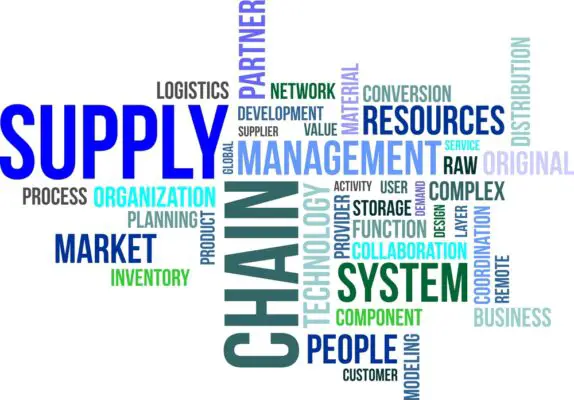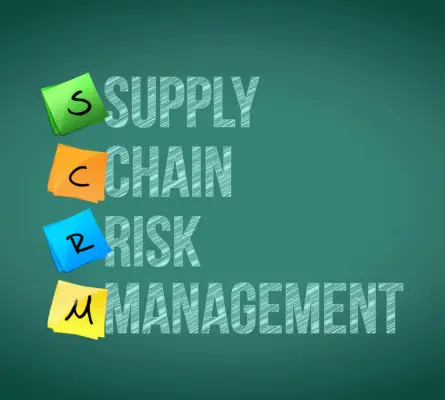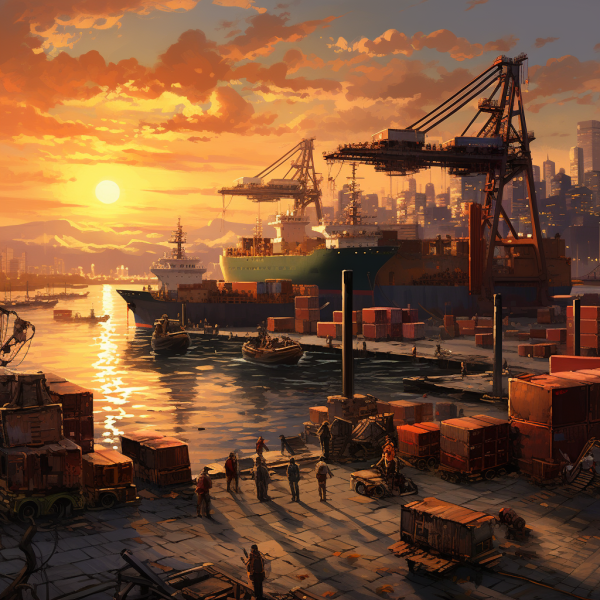The ongoing European supply chain crisis that began in 2020 due to the COVID-19 pandemic is still being felt in 2023. A complex supply chain disruption has severely impacted the global economy due to shortages of several key factors.
Analysts from various institutions, including the School of Business at Harvard Business School 2020, have closely monitored the global demand and provided insights into current affairs and covid.
Lockdowns imposed worldwide at the start of the pandemic led to a sudden halt in production, causing a ripple effect throughout the supply chain.
This was not a disruption due to just one point in the supply chain; it was a systemic issue affecting manufacturing, logistics, freight, and delivery of goods and services.
The vulnerability of the global supply networks was exposed, leading to longer lead times and delayed delivery times, and maybe issues with product quality.
The demand for goods, especially consumer goods, skyrocketed as people adjusted to new norms of working and living. This increased demand and supply shortages due to production halts led to a supply crisis.
Even as businesses and consumers adapted, the supply chains needed to meet this strong demand were close to capacity, leading to ongoing supply chain bottlenecks.
The global logistics sector, including airfreight, has grappled with port congestion and increased fuel costs.
The chip shortage, a significant issue that began in 2021, has continued to affect various industries, particularly the automotive and technology sectors.
This has led to calls for increased domestic semiconductor manufacturing, especially in the U.S., to reduce dependency on foreign suppliers.
Structural factors, such as the conflict in Ukraine and rising commodity prices, have also exacerbated the recent supply chain issues.
These have led to price inflation and price spikes, affecting the global economic recovery. The supply and demand imbalance has not yet returned to pre-pandemic levels, with disruptions across the supply chain still prevalent.
Supply chain management has become a critical focus for businesses, emphasizing supply chain planning and inventory management. The goal is to build more resilient supply chains that can withstand future shocks.
This includes understanding the factors contributing to the current crisis, such as the increased demand due to the pandemic and global shortages of critical resources not aligned with consumer demand.
Supply chain resilience is now a priority, with businesses aiming to ensure the quality of their products and timely delivery despite the challenges.
The lessons learned from the current crisis will likely shape supply chain strategies for years. As reported by ABC News, experts predict that the effects of the current supply chain disruptions will continue to be felt throughout 2023 and possibly into the first half of 2022.
Supply chains are complex networks that involve multiple stages, processes, and stakeholders. They play a critical role in ensuring the availability of goods and services to meet the demands of consumers and businesses.
However, supply chains are vulnerable to disruptions that can cause significant time, money, and reputation losses.

Factors Contributing to Supply-Chain Disruptions
The supply-chain disruptions in 2022,2021, and 2023 were primarily forecast to be caused by the COVID-19 pandemic and its subsequent effects on global trade and supply-chain issues. Here are some of the critical factors for supply chain management:
Global Lockdowns: Many countries imposed strict lockdowns to curb the spread of the virus. This led to the closure of factories and businesses, causing a significant slowdown in production.
Labor Shortages: The pandemic caused labor shortages due to illness, quarantine measures, and social distancing requirements. This affected all parts of the supply chain, from manufacturing to transportation and delivery.
Increased Demand: Certain sectors, such as e-commerce, healthcare, and home improvement, saw a surge in demand as people adjusted to life during the pandemic. This sudden increase in demand put additional pressure on already strained supply chains.
Transportation Disruptions: Travel restrictions and safety measures affected air, sea, and land transportation. For example, many airlines cut flights, reducing the capacity for air freight. Similarly, logistical port closures and reduced capacity at docks caused delays in sea freight.
Geopolitical Tensions: The pandemic also exacerbated geopolitical tensions due to shortages, such as the trade war between the United States and China. These tensions further complicated international trade and supply chains.
Suez Canal Blockage: In March 2021, the Ever Green, a large container ship, got stuck in the Suez Canal, one of the world’s busiest shipping lanes. This caused a massive backlog of ships and further disrupted global supply chains.
Raw Material Shortages: Various raw materials were shortages due to production slowdowns and increased demand. For example, significant semiconductor shortages affected many industries, especially the automotive sector, causing supply chain issues.
Increased Costs: All these factors led to increased costs for transportation and raw materials, further strained supply chains, and increased consumer prices at points in the supply chain.
Understanding the causes of supply chain disruption is the most important for managers and practitioners to mitigate risks and enhance resilience. This article provides a comprehensive overview of the factors that can lead to supply chain disruption.
We will examine various disruptions, including natural disasters, political events, economic downturns, technological failures, and internal issues.
Natural Disasters and Environmental Factors on Supply Chain Disruption
Natural disasters and environmental factors can significantly disrupt supply chains, leading to delays and shortages of essential goods and services.
These disruptions often occur when global supply chains are involved, as these supply chains are complex and involve multiple parties.
Natural disasters such as earthquakes, hurricanes, and floods can cause damage to transportation infrastructure, making it difficult for goods to be transported from one location to another.
Environmental factors such as extreme weather conditions, droughts, and wildfires can also lead to disruptions in the global supply chain.
The logistics of a supply chain are often affected by natural disasters and environmental factors, as they can create bottlenecks that slow down the movement of goods.
For example, if a natural disaster damages a major port, it can cause a backlog of shipments waiting to be processed. This can cause delays in delivering goods and services, which can have a ripple effect on the entire supply chain.
Similarly, extreme weather conditions can make it difficult for trucks and other vehicles to transport goods, leading to shortages of essential products.
Companies must have contingency plans to mitigate the impact of natural disasters and environmental factors on the global supply chain.
This includes having backup transportation routes, alternative suppliers, and emergency stockpiles of essential goods.
Overall, companies must proactively address the risks associated with natural disasters and environmental factors, as these events can significantly impact the global supply chain.
Political and Geopolitical Events causing supply chain shortage
Political and geopolitical events have the potential to significantly impact the interconnected global economy, leading to a range of consequences that reverberate throughout various industries and markets.
The supply chain disruption caused by political events can be sudden and unexpected, resulting in a domino effect of delays and disruptions that can have far-reaching consequences.
These disruptions can trigger various factors, including trade agreements, government regulations, political instability, and leadership changes.
One of the most recent examples of political events causing supply chain disruption is the COVID-19 pandemic. The pandemic has caused a global supply chain crisis that has affected healthcare and retail industries.
The pandemic has led to the closure of borders, the disruption of trade flows, and a labor shortage, all of which have contributed to significant disruptions in the global supply chain.
The pandemic has also highlighted the importance of robust supply chains resilient to unexpected events.
Several factors contribute to the impact of political and geopolitical events on the global supply chain. These factors include the complexity and interconnectedness of the global economy, the speed at which information travels, and the uncertainty accompanying political events.
As a result, supply chain disruptions caused by political and geopolitical events can be difficult to predict and manage.
Organizations need contingency plans that consider the potential impact of political events on their supply chain and strategies to mitigate the risks associated with these events.
Economic Downturns and Trade Policies ongoing supply chain bottleneck
Economic downturns and trade policy changes can significantly impact global markets and industries, with repercussions reverberating throughout the interconnected global economy.
These factors can disrupt the supply chain, causing shortages and delays in the delivery of goods and services.
The ongoing supply chain disruptions caused by the COVID-19 pandemic are a stark reminder of the vulnerability of global supply chains to economic shocks and geopolitical events.
One of the major impacts of economic downturns and changes in trade policies is the disruption of supply chain planning. When demand for goods and services declines, companies might reduce their orders for raw materials and other inputs.
This can cause a ripple effect throughout the supply chain, with suppliers and manufacturers reducing input orders.
As a result, suppliers might be unable to meet their contractual obligations, leading to shortages and delays in delivering goods and services.
The global economic recovery from the COVID-19 pandemic is expected to be slow and uneven, with some industries and regions recovering faster than others.
In this context, businesses that rely on complex global supply chains must be prepared to adapt to ongoing supply chain disruptions.
This might involve developing contingency plans, diversifying supply chains, and investing in digital technologies to improve supply chain visibility and resilience.

Technological Failures and Cybersecurity Threats on Supply Chain Planning
The increasing reliance on technology in our interconnected world has made businesses and individuals more vulnerable to technological failures and cybersecurity threats.
As a result, supply chain disruptions have become common, causing significant impacts on businesses and consumers alike.
Technological failures can arise from various sources, including software glitches, hardware malfunctions, and system crashes, leading to a halt in operations and disrupted supply chains.
Cybersecurity threats are another significant source of supply chain disruptions. Digitalization has brought about new risks like data breaches, hacking, and ransomware attacks.
These threats can compromise critical systems and sensitive information, leading to significant financial losses and reputational damage.
In some cases, cyberattacks can cause widespread disruptions that affect entire industries, such as the recent ransomware attack on a major fuel pipeline in the United States.
The COVID-19 pandemic has further highlighted the vulnerabilities of global supply chains to technological failures and cybersecurity threats.
As the pandemic forced businesses to shift to remote work and digital operations, the reliance on technology increased, as did the risks of disruptions.
Due to disrupted supply chains, The pandemic saw significant supply shortages of essential goods, such as personal protective equipment and medical supplies.
As such, businesses and governments must prioritize cybersecurity measures and invest in robust technological infrastructure to mitigate the risks of supply chain disruptions.
Internal Issues and Poor Management Practices on supply shortages
Inadequate management practices can lead to inefficiencies within a company’s internal processes, potentially impacting the entire supply network. Various internal issues and poor management practices can cause supply chain disruptions.
One of the most common issues is a lack of communication between different departments within a company. When departments do not communicate effectively, it can lead to misunderstandings, delays, and errors that can disrupt the entire supply chain.
Another internal issue that can cause supply chain disruptions is poor inventory management. A company that does not have accurate inventory records may be unable to fulfill orders on time, leading to delays and dissatisfied customers.
Similarly, if a company does not have a backup plan for when suppliers cannot deliver on time, it can disrupt the entire supply chain. This is especially true if a company relies heavily on one or a few suppliers.
A lack of transparency and accountability can also cause supply chain disruptions. When no clear guidelines or procedures are in place for managing the supply chain, it can lead to confusion and errors.
Additionally, if employees are not held accountable for their actions, it can lead to a lack of motivation and a disregard for the importance of maintaining the integrity of the supply chain.
Frequently Asked Questions
How do supply chain disruptions affect the end consumer during a pandemic?
Supply chain disruptions can lead to increased product costs, delivery delays, and inventory shortages, ultimately affecting the end consumer.
This can result in decreased customer satisfaction and loyalty, and business profitability.
What strategies can companies adopt to mitigate the impact of supply chain disruptions?
Companies can mitigate the impact of supply chain disruptions by implementing risk management strategies such as diversifying suppliers, increasing inventory levels, and establishing contingency plans.
These measures can help ensure business continuity and minimize disruptions to the end consumer.
How do supply chain disruptions affect the global economy?
Supply chain disruptions can cause a ripple effect throughout the global economy, leading to decreased production, increased prices, and financial losses.
The extent of the impact depends on the severity and duration of the disruption and the interconnectedness of the supply chain.
What role do supply chain partners play in preventing disruptions?
Effective collaboration and communication among supply chain partners can help prevent disruptions.
This includes sharing information on inventory levels, production schedules, and potential risks. Risk management strategies and contingency plans should also be developed and implemented.
How can companies ensure the resilience of their supply chains in the face of unpredictable events?
To ensure supply chain resilience in the face of unpredictable events, companies can adopt proactive measures such as risk assessments, diversification of suppliers, and contingency planning.
Collaboration with partners and leveraging technology can enhance visibility and responsiveness to disruptions.

Conclusion
Supply chain disruptions can be caused by various factors, ranging from natural disasters and environmental factors to technological failures and cyber threats.
Political and geopolitical events, economic downturns, and trade policies can also adversely affect the supply chain.
Poor management practices and internal issues can also result in significant disruptions. Organizations must take proactive measures to minimize the risk of supply chain disruptions.
Such measures may include building resilience, diversifying suppliers, and investing in technology to enhance supply chain visibility and transparency.
Effective communication and collaboration among all stakeholders can help mitigate disruptions’ impact when they occur.
As such, organizations should prioritize supply chain risk management to ensure the continuity of their operations and protect their competitive advantage.

Chris Ekai is a Risk Management expert with over 10 years of experience in the field. He has a Master’s(MSc) degree in Risk Management from University of Portsmouth and is a CPA and Finance professional. He currently works as a Content Manager at Risk Publishing, writing about Enterprise Risk Management, Business Continuity Management and Project Management.

